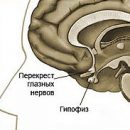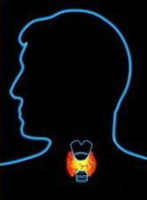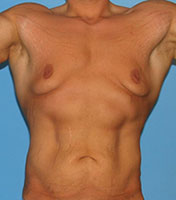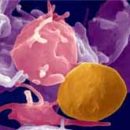Hyperparathyroidism arises as a result of excess production of the hormone of the parachitoid gland, which leads to an increase in the amount of calcium in the blood and a decrease in its concentration in bone tissue. Clinically disease is manifested by a high number of fractures, loosening and losing teeth, hair, deposits in kidney stones.
Content
The concept of hyperparathyroidism
Hyperparatroma - this is a disease in which excessive products of the hospital hormone (paratyrin, paranthramon) occurs, as a result of which the amount of calcium increases in the blood, at the same time the amount of calcium in the bone system decreases and a tendency to fractures of bones arises. It used to be that this is a rather rare disease, however, thanks to modern methods, research it was found that among the population of developed countries, the frequency of hyperparathyroidism is 0.5-1 per thousand people and most often there are hidden forms of the disease, which are randomly discovered when examining any Other reasons.
Hyperparathyroidism happens:
- Primary
- Secondary
Primary hypoparathyroidism occurs as a result of overpressure of the parathgamon unit or multiple adenomas (benign tumor formation from iron tissue), hyperplasia (increasing the size of the gland) or less often (about 1-1.5%) cancer of the parachitoid glands. In 10% of patients, this condition is combined with other endocrine tumors (pheochromocytoma, pituitary tumors, thyroid cancer). The primary hyperparatromium is also inherited hyperparathyroidism, which is also usually combined with other hereditary diseases of endocrine organs.
Secondary hyperparathyroidism occurs during long-term failure of calcium in the blood. At the same time, the reinforced products of the parathgamon occurs in the form of a compensatory reaction - the body is trying to restore the normal amount of calcium in the blood. Secondary hyperparathyroidism occurs in vitamin D insufficiency for various reasons, with diseases of the gastrointestinal tract accompanied by a disorder of calcium suction in the intestine.
Symptoms of the disease
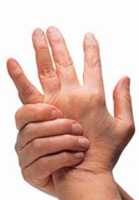 Hyperparatroma is accompanied by excess production of paratyrin, under the influence of which the phosphorus and calcium bones are output. The consequence of this is the restructuring of bone tissue. It becomes fragile or soften. As a result, the bones can be curved and easy to break. Excessive amount of calcium in the blood leads to the emergence of muscle weakness, the formation of kidney stones. The amount of urine and the secondly reinforced thirst and consumption of a large amount of fluid patient. In the stomach, reinforced hydrochloric acid products occur, possibly the occurrence of ulcer of the stomach.
Hyperparatroma is accompanied by excess production of paratyrin, under the influence of which the phosphorus and calcium bones are output. The consequence of this is the restructuring of bone tissue. It becomes fragile or soften. As a result, the bones can be curved and easy to break. Excessive amount of calcium in the blood leads to the emergence of muscle weakness, the formation of kidney stones. The amount of urine and the secondly reinforced thirst and consumption of a large amount of fluid patient. In the stomach, reinforced hydrochloric acid products occur, possibly the occurrence of ulcer of the stomach.
Often enough, as mentioned, hyperparathyroidism proceeds imperceptibly for the patient and is found randomly. The first clinical manifestations of the disease is weakness in the muscles, fast fatigue during exercise, loosening and loss of teeth and hair, scattered pain in small bones of hands and especially legs. With prolonged course of the disease, the skin of the patient acquires the earth-gray shade. Due to changes in the bone skeleton, the patient can be lower than the growth. Often occur bone fractures with ordinary movements and even in bed. Patients complain of nausea, vomiting, stomach pain. The high amount of calcium in the blood can lead to the affection of the blood vessels and the occurrence of angina attacks. There is an increase in the amount of urine, which, due to the large amounts in it, takes a whitish color. Due to the defeat of the spine arise back pain, radiculites. When parsing the region of the parathyroid glands on the neck can be revealed only to a very large adena of parachite glands.
The main feature of the hyperparathrosis is the increase in calcium detected during biochemical blood test. An even decrease in the number of phosphates in the blood is detected, and an increase in the amount of enzyme - alkaline phosphatase. It is possible to define the blood of the number of paranthormon. On radiographs of bones, multiple characteristic changes are found: osteoporosis, decrease in the height of the vertebrae, cysts in bone tissue especially in the bones of jaws and long tubular bones.


